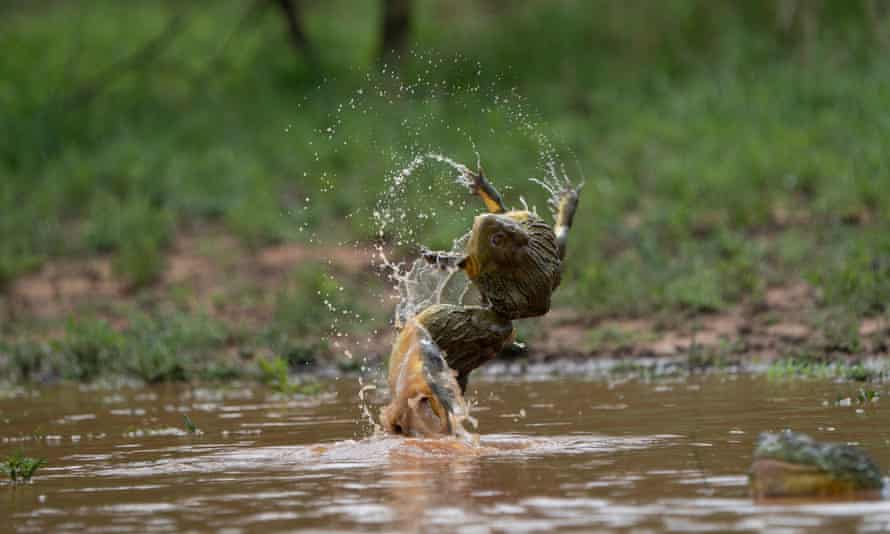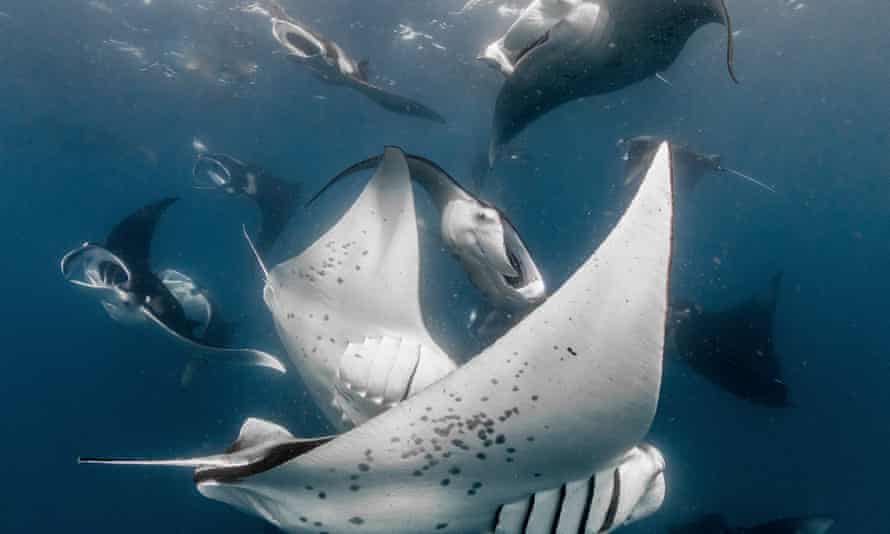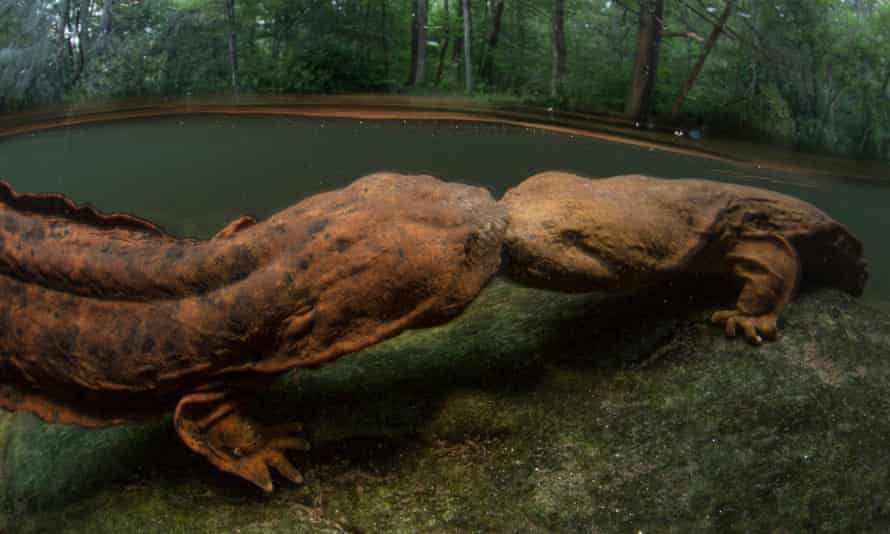Pandemic forces BBC into new approach for David Attenborough’s The Mating Game
BBC One natural history series relied on local film-makers to be in the right place at the right time

Last modified on Sun 3 Oct 2021 13.51 EDT
African bullfrogs converging on pools in South Africa and fighting like bar room brawlers; a school of ghostly-looking manta rays assembling off the Australian coast; vivid images of amphibious snot otters working co-operatively in a cold north American river.
These are all scenes from the new BBC One David Attenborough blockbuster series The Mating Game, filmed during the Covid crisis using a markedly different approach to the 50-year-old tried-and-tested way of doing things.

The pandemic meant Bristol-based Silverback Films was not able to fly its crews to far-flung parts of the world and instead relied on local film-makers. Series producer Jeff Wilson said it had not only kept the production on track but also improved the chances of capturing wonderful moments that will be wowing audiences this autumn.
Wilson said: “You’re always trying to get your field crew in the right place at the right time. That’s the key skill and it is limited by budgets and weather windows. If you can reduce the risk about being in the right place at the right time by having someone local there for longer, you give yourself the opportunity to create even something more magical.”

A case in point was the bullfrog scenes. “African bullfrogs come out for their mating game at a very specific time after there has been a certain amount of rain to create pools large enough for them to collect in. You get a whole bunch of enormous frogs coming together as if they’re gathering in a bar on a Saturday night and fighting for access to females. This only happens over two or three days and when that happens is anyone’s guess, especially with climatic changes.”
A South African filmmaker, Russell MacLaughlin, lives close to the spot in Limpopo province and so could be on hand when the right rain swept in. McLaughlin said he began waiting for the moment in November last year but it was not until February that two cyclones hit the African shoreline in quick succession. The pools filled and the frogs appeared. “We were based two hours from there. You have to react very quickly. It’s absolute chaos and then it’s all over,” he said.
Silverback, which is part of All3Media, hired a young Australian, Alex Vail, to film the manta rays off Australia. He spent 16 weeks awaiting their arrival. Vail was also responsible for some extraordinary scenes of hermaphroditic Persian carpet flatworms “fencing” with their penises on the Great Barrier Reef.

Wilson said it did not mean UK-based filmmakers would not travel again but using locals helped balance the gamble of being in the right place at the right time. He said it meant greater risks could be taken with another sequence – for example, you might feel confident enough to send a cameraperson from the UK to spend 15 weeks in a hide in Russia if you knew you were able to rely on a local person to be ready to leap into action in another part of the world. “It gives us more scope to blow people’s minds,” he said.
Another highlight of the series is scenes of snot otters, also known as hellbenders. The males allow each other to fertilise a female’s eggs, an unusual piece of altruism. Wilson said: “You couldn’t have achieved the sequence we have without guys based on the ground in north America who know these rivers and the nuances of the behaviour and have spent a lot of time with their face in a mask in a very cold river.”

Keith Scholey, co-founder and CEO of Silverback, said that over the last few decades hard-to-use, high definition cameras had become the normal tool for wildlife filmmakers. Recent years have seen investment in teaching people from around the world how to use them.
Better communications – it can be as easy to get a 4G signal in the wilds of South Africa as in the US – means staying in touch with local crews is becoming ever easier. “We’re much more aware of the carbon cost of travel so all this makes sense,” said Scholey.